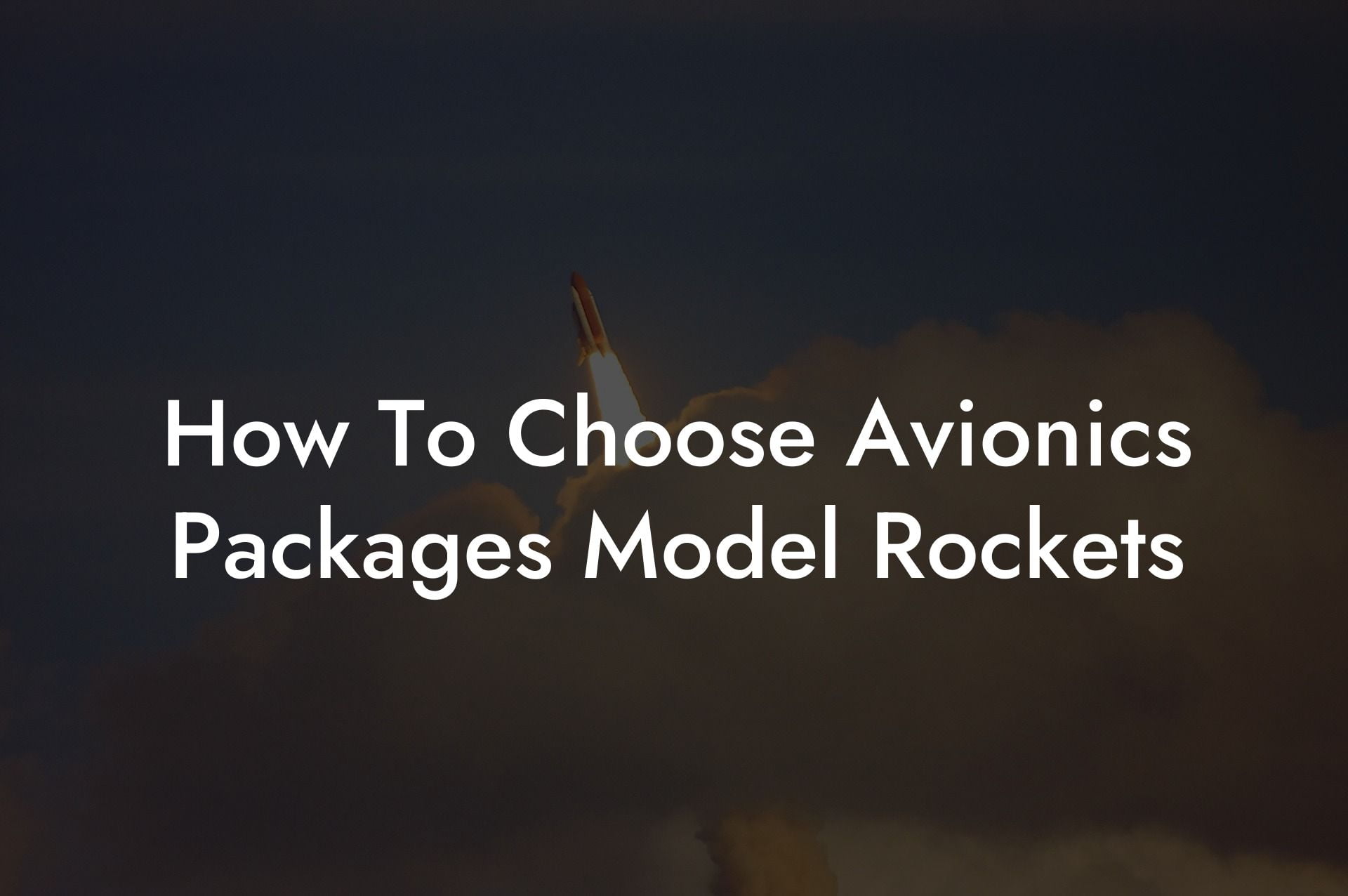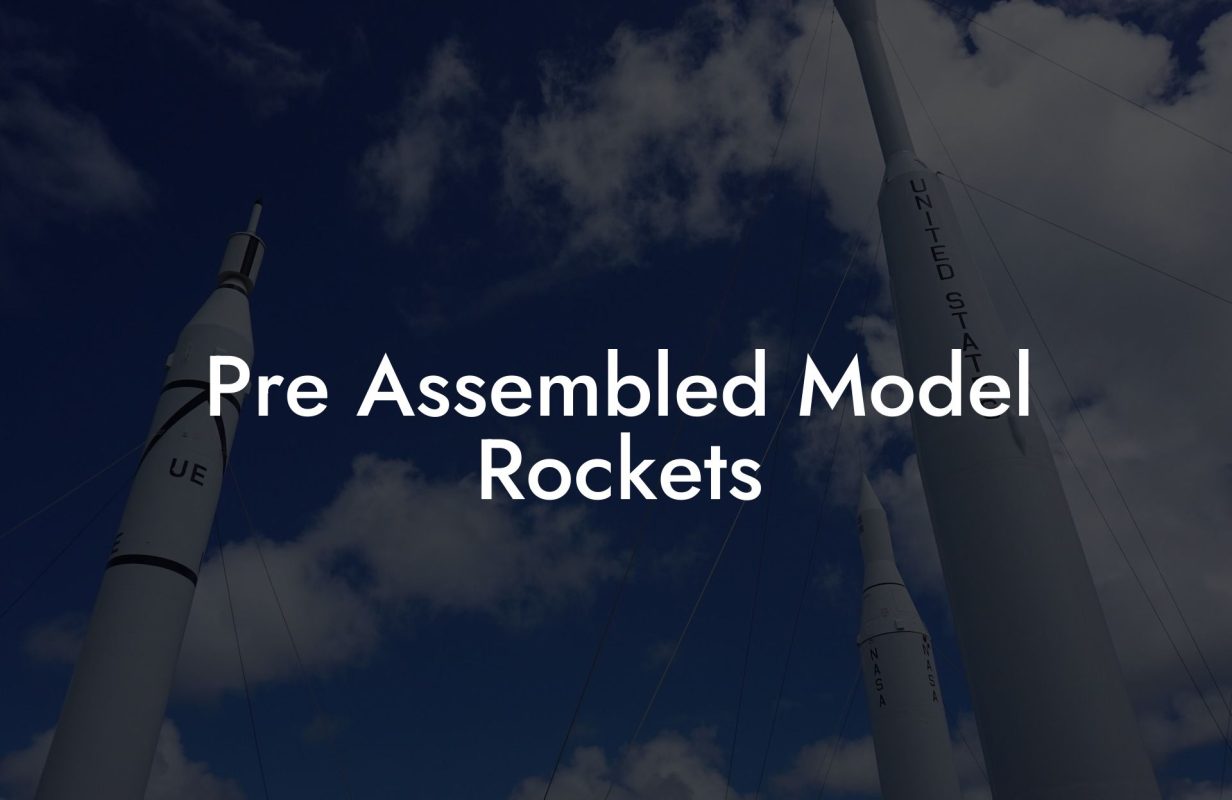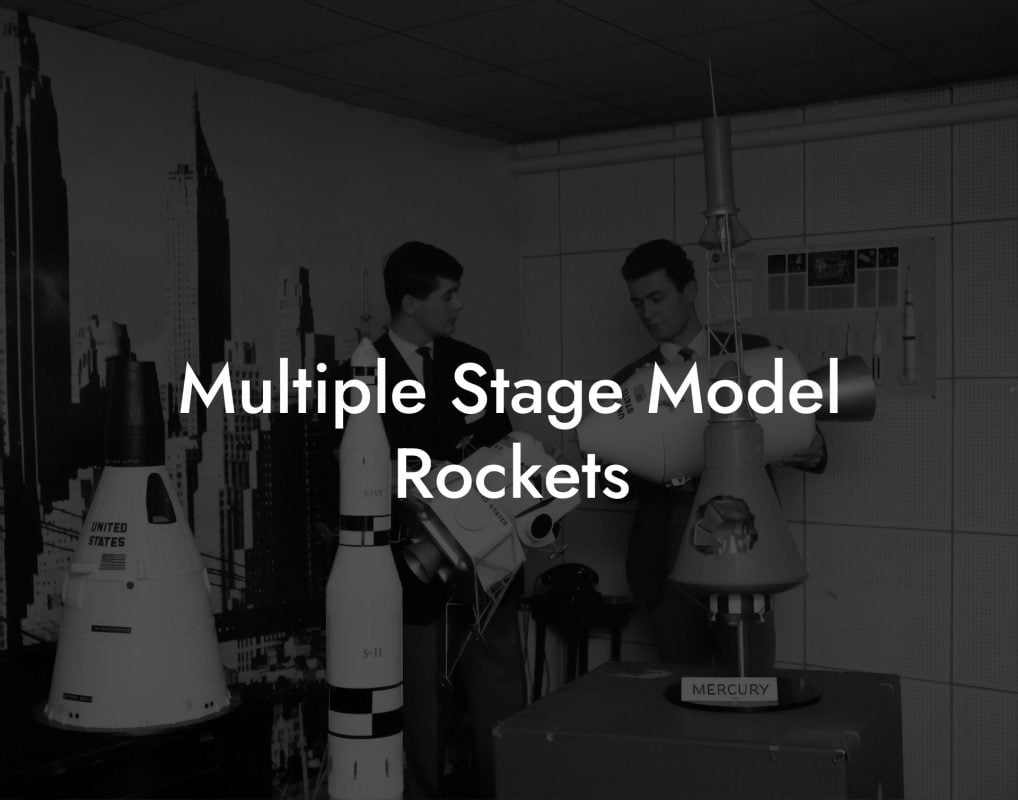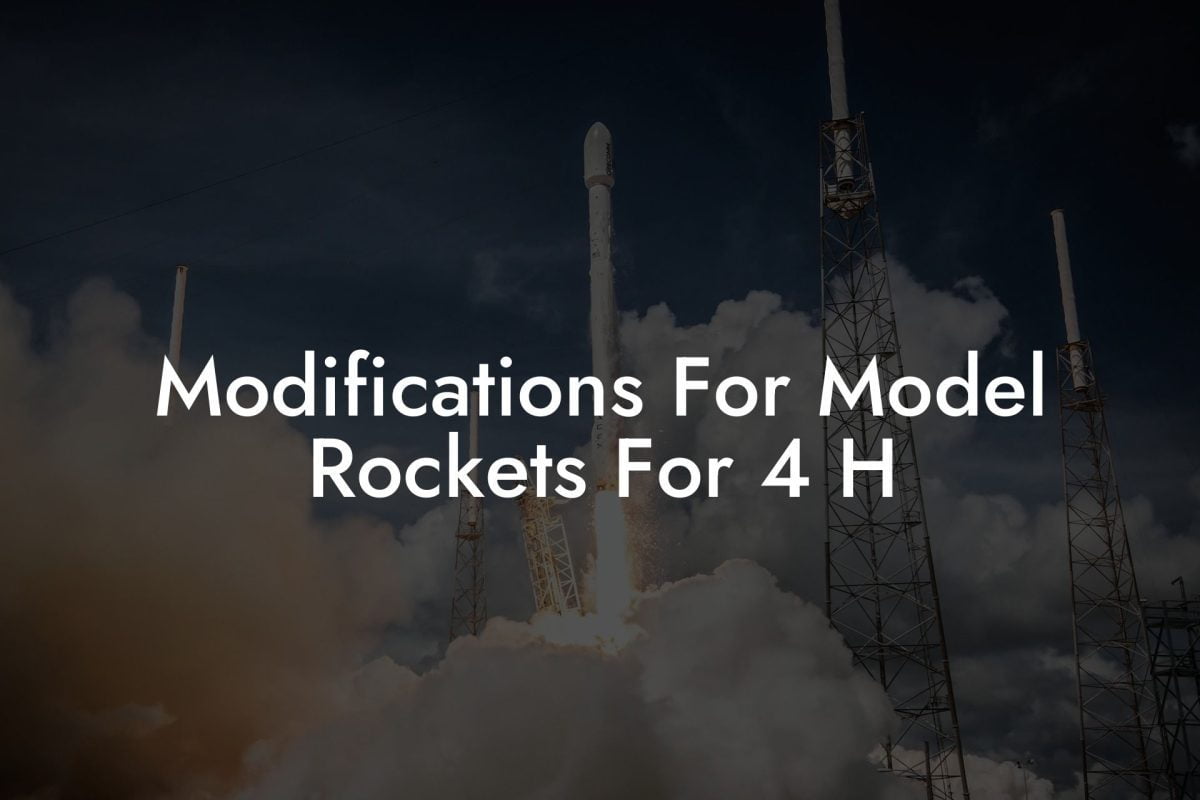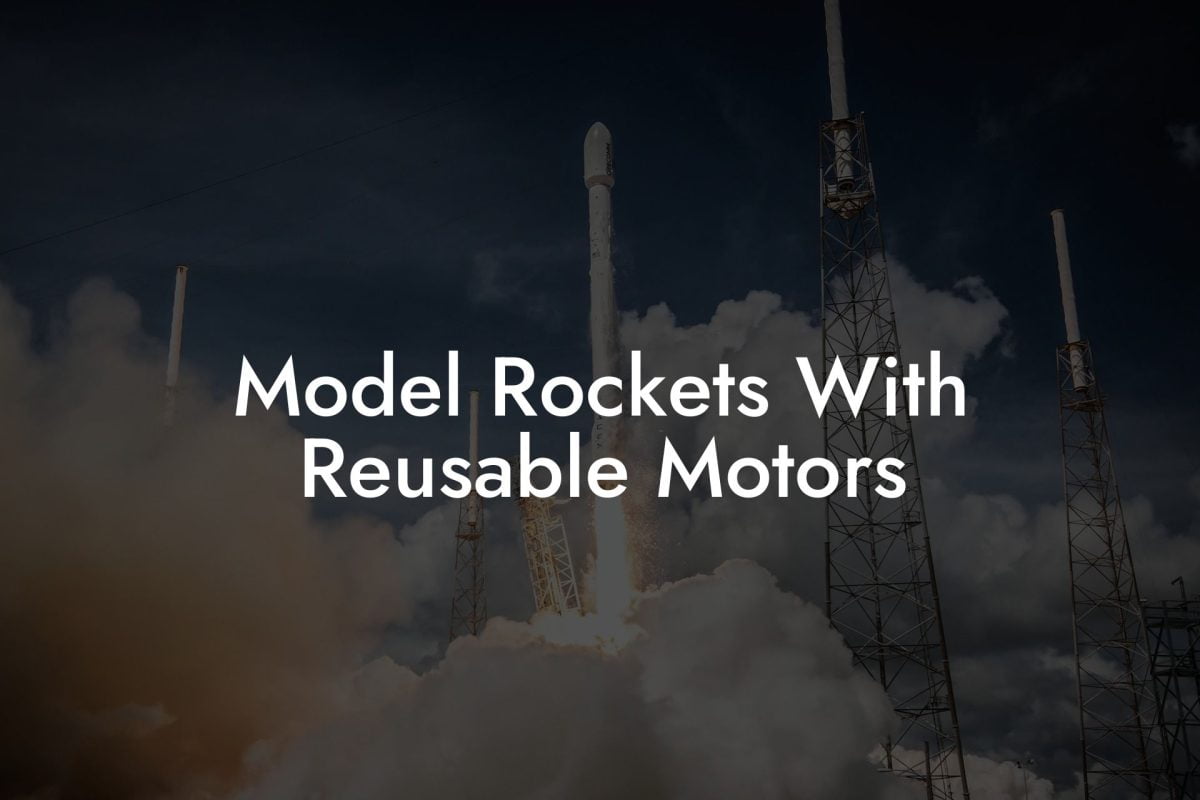Imagine soaring to new heights with your model rocket, equipped with the perfect avionics package to ensure a safe and successful flight. With so many options available, selecting the right avionics package can be overwhelming. But fear not, fellow model rocket enthusiasts! This comprehensive guide will walk you through the essential considerations, key components, and expert tips to help you choose the ideal avionics package for your model rocket.
Quick Links to Useful Sections
Understanding Avionics Packages for Model Rockets
Avionics packages are the electronic systems that control and monitor your model rocket's flight. They typically consist of a combination of sensors, flight computers, and communication devices that work together to ensure a stable and controlled flight. When choosing an avionics package, it's essential to consider the specific needs of your model rocket, including its size, weight, and flight profile.
There are several types of avionics packages available, each with its own strengths and weaknesses. Some popular options include:
- Basic Avionics Packages: These packages typically include a flight computer, accelerometer, and altimeter. They provide basic flight data and are suitable for smaller model rockets.
- advanced Avionics Packages: These packages often include additional sensors, such as GPS and gyroscopes, which provide more detailed flight data and improved stability.
- Custom Avionics Packages: These packages are tailored to meet the specific needs of your model rocket and can include a range of custom sensors and components.
Key Components of Avionics Packages
When selecting an avionics package, it's essential to consider the individual components and how they will work together to support your model rocket's flight. Some key components to consider include:
- Flight Computers: The brain of your avionics package, flight computers process data from various sensors and make decisions in real-time to ensure a stable and controlled flight.
- Sensors: A range of sensors, including accelerometers, altimeters, and gyroscopes, provide critical flight data to the flight computer.
- Communication Devices: Communication devices, such as radio transmitters and receivers, enable real-time communication between your model rocket and the ground station.
Factors to Consider When Choosing an Avionics Package
With so many avionics packages available, it's essential to consider several factors to ensure you choose the right one for your model rocket. Some key factors to consider include:
Looking For The Best Model Rocket Kits? You'll Love These:
- Model Rocket Size and Weight: Larger and heavier model rockets require more advanced avionics packages to ensure stable and controlled flight.
- Flight Profile: The type of flight your model rocket will be undertaking, such as high-altitude or high-speed flight, will impact the type of avionics package required.
- Budget: Avionics packages can range in price from a few hundred to several thousand dollars, so it's essential to set a budget and choose a package that meets your needs and budget.
Expert Tips for Choosing the Right Avionics Package
When it comes to choosing the right avionics package for your model rocket, experience and expertise can make all the difference. Here are some expert tips to consider:
- Research and Read Reviews: Research different avionics packages and read reviews from other model rocket enthusiasts to get a sense of their performance and reliability.
- Consult with Experts: Reach out to experienced model rocket enthusiasts or professionals in the field for advice and guidance on choosing the right avionics package.
- Test and Evaluate: Test different avionics packages and evaluate their performance before making a final decision.
Resources and community Support
Choosing the right avionics package is just the first step in ensuring a successful model rocket flight. Here are some additional resources and community support to help you on your journey:
- Model Rocket Forums and Communities: Join online forums and communities dedicated to model rocketry to connect with other enthusiasts and get advice and guidance.
- Avionics Package Manufacturers: Reach out to manufacturers of avionics packages for technical support and guidance on choosing the right package for your model rocket.
- Local Model Rocket Clubs: Join local model rocket clubs to connect with other enthusiasts and gain hands-on experience with different avionics packages.
Frequently Asked Questions
Here are some frequently asked questions about choosing avionics packages for model rockets:
1. What is the most important factor to consider when choosing an avionics package?
The most important factor to consider is the specific needs of your model rocket, including its size, weight, and flight profile.
2. What is the difference between a basic and advanced avionics package?
Basic avionics packages typically include a flight computer, accelerometer, and altimeter, while advanced packages include additional sensors, such as GPS and gyroscopes.
3. How do I know if I need a custom avionics package?
If your model rocket has unique requirements or specifications, a custom avionics package may be necessary to ensure a safe and successful flight.
4. What is the average cost of an avionics package?
The cost of an avionics package can range from a few hundred to several thousand dollars, depending on the complexity and features of the package.
5. How do I install an avionics package in my model rocket?
Installation instructions will vary depending on the specific avionics package and model rocket. Be sure to follow the manufacturer's instructions and seek guidance from experienced model rocket enthusiasts if necessary.
Looking For The Best Model Rocket Kits? You'll Love These:
Useful Interruption: Dive deeper into the world of Model Rockets with our most popular sections. If there is anything you think is missing or anything you would love for us to write about, just give us a shout.
- Getting Started & Basics With Model Rockets
- Model Rocket Design, Build & Customization
- Model Rocket Propulsion & Engine Technology
- Model Rocket Launch Techniques & Recovery
- Model Rocket Advanced Rocketry & Innovations
- Model Rocket DIY and Customization
- Model Rocket Equipment Reviews & Digital Tools
- Community, Competitions & Education
- Model Rocket Troubleshooting & FAQs
- Model Rocket Bonus/Seasonal & Niche Topics
A group of model rocket enthusiasts gathered at a field for their weekly launch event. Among them was Dave, a seasoned builder known for pushing the limits of hobby rocketry. This time, he had outdone himself.
“Ladies and gentlemen,” Dave announced, dramatically pulling a cloth off his latest creation, “I present to you: The Kraken!”
The crowd gasped. This wasn’t just a model rocket, it was a monster. The thing stood 8 feet tall, had six clustered engines, and was covered in enough duct tape to qualify as a classified aerospace project.
“Dave,” muttered Steve, the cautious safety officer, “Have you, uh… done the math on this?”
“Math?” Dave scoffed. “I built it in my garage at 3 a.m. with parts from eBay. This is an art piece, Steve.”
The countdown began.
5…
4…
3…
2…
1…
The engines ignited with a BOOM, and The Kraken shot up… kind of. It immediately did a violent barrel roll, narrowly missing the spectators before skyrocketing at an angle that could only be described as “legally questionable.”
The crowd collectively ducked as The Kraken flew straight over the adjacent cornfield, where Old Man Jenkins, the grumpiest farmer in town, was minding his business.
KABOOM!
The rocket disappeared behind the barn. A moment later, a flaming piece of Estes igniter wire landed at Steve’s feet. The silence was deafening.
And then, an unmistakable sound echoed across the field.
Jenkins’ shotgun being cocked.
“DAVE!!!” Steve shouted. “RUN.”
And that was the day Dave invented the first-ever biologically powered rocket booster: pure adrenaline.
To this day, nobody knows where The Kraken landed, but legend has it, it still haunts the skies, terrifying unsuspecting drones and low-flying birds.

